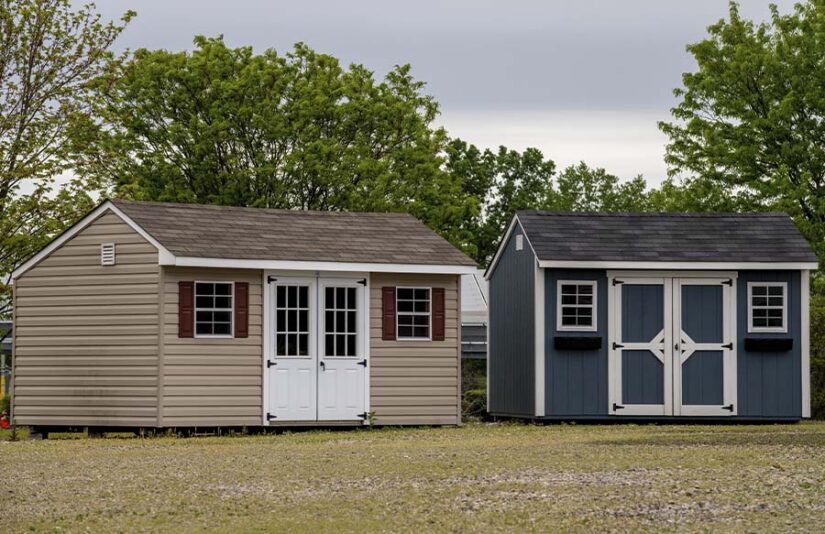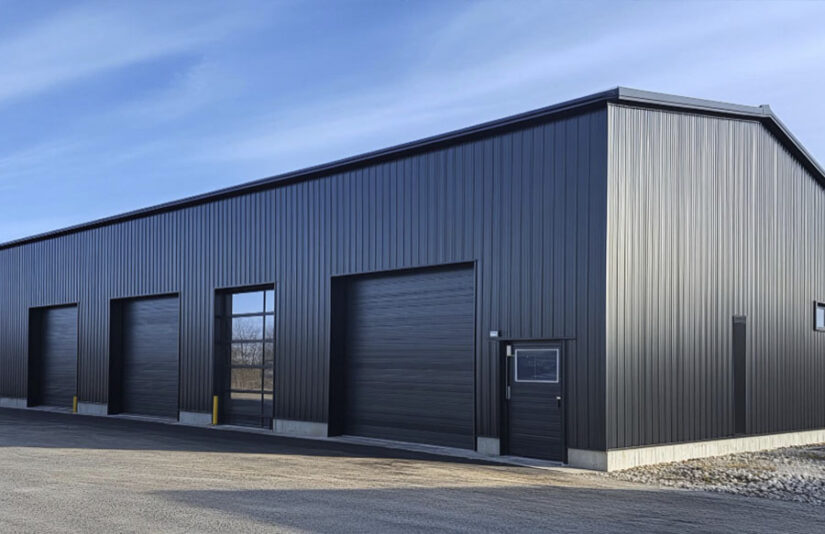
When it comes to building a dedicated workspace on your property, choosing between a steel workshop and a traditional wood shed is a big decision. Whether you’re a hobbyist, contractor, or small business owner, your building needs to be durable, cost-effective, and tailored to your unique requirements. Let’s break down the key differences between steel and wood structures in terms of durability, cost, and customization so that you can make an informed choice.
Durability: Strength That Lasts
Steel Workshops
- Weather Resistance: Steel structures hold up exceptionally well against wind, snow, rain, and even hail. They are designed to meet local building codes, including wind and snow loads.
- Pest-Proof: Termites and rodents are no match for galvanized steel. Unlike wood, steel does not rot, warp, or crack over time.
- Fire Resistance: Steel is non-combustible, making it a safer option in areas prone to fire.
- Longevity: With proper maintenance, a steel workshop can last 40–60 years or more.
Wood Sheds
- Natural Appeal: Wood has a classic, rustic look, but this beauty comes with maintenance challenges.
- Weather Vulnerability: Wood is more susceptible to warping, rot, and moisture damage.
- Pest Risk: Insects, such as termites, can weaken the structural integrity over time.
- Maintenance Needs: Regular painting, staining, and repairs are necessary to maintain a wooden shed in good condition.
Winner: Steel workshops offer superior durability in nearly every climate condition.
Cost: Upfront vs. Long-Term Investment
Steel Workshops
- Higher Upfront Cost: The initial investment may be slightly higher than wood, depending on size and features.
- Lower Lifetime Costs: Minimal maintenance, improved energy efficiency, and long-term durability all contribute to reducing the total cost of ownership.
- Insurance Savings: Many insurers offer discounts for steel buildings due to their fire resistance.
Wood Sheds
- Lower Initial Cost: Wood sheds often have a lower upfront price tag.
- Maintenance Expenses: Ongoing upkeep, pest control, and repairs add to long-term costs.
- Shorter Lifespan: May need replacement or significant renovation within 15–25 years.
Winner: Steel workshops may cost more initially, but they offer better value over time.
Customization: Flexibility and Functionality

Steel Workshops
- Highly Customizable: Choose from various dimensions, roof styles, door placements, colors, and insulation options.
- Large Clear Spans: Ideal for open interior layouts – no load-bearing interior walls required.
- Expansion Ready: Easy to add additional space or features like lean-tos or attached garages.
Wood Sheds
- Aesthetic Customization: Easier to match to existing homes or landscaping styles.
- Structural Limitations: Harder to build large clear spans or high-ceiling interiors.
- Design Constraints: Limited by traditional framing methods.
Winner: Steel offers unmatched flexibility for larger or more complex workshop designs.
Use Cases: What’s Best for Your Needs?
| Use Case | Steel Workshop | Wood Shed |
| Mechanic’s Garage | Excellent | Limited by weight capacity |
| Carpenter’s Shop | Spacious and durable | Traditional but needs maintenance |
| Art Studio | Well-insulated, climate-controlled | Cozy but less weather-tight |
| Equipment Storage | Strong and secure | Susceptible to damage |
Final Thoughts
If your priorities are longevity, low maintenance, and custom options, a steel workshop is the clear winner. While wood sheds can offer charm and a lower entry price, they typically fall short in long-term performance, especially in harsh climates.
Ready to Upgrade?
Get a Free Quote from US Patriot Steel and let our team help you design the perfect steel workshop tailored to your property, needs, and budget.